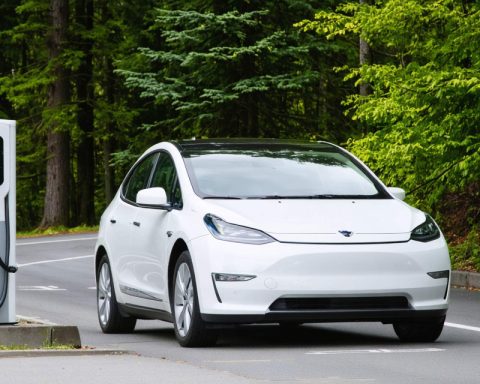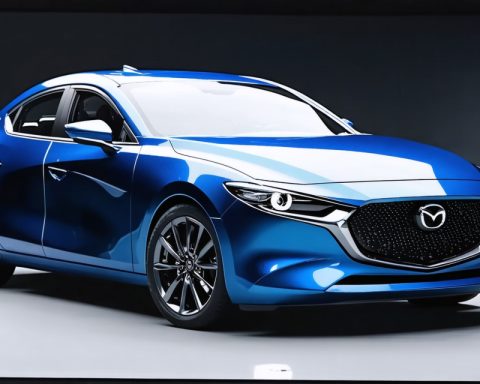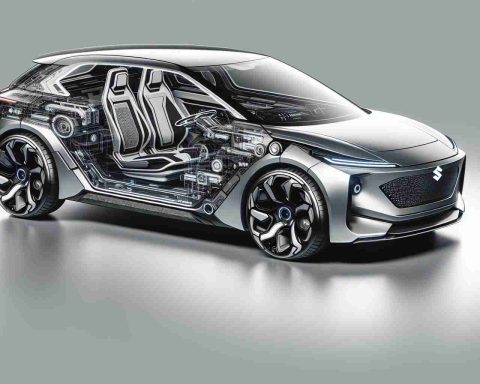- Oregon surpasses 100,000 electric vehicles (EVs), aligning with the state’s climate goals.
- The rise of EVs reduces gas tax revenue, challenging Oregon’s ability to fund its $1.8 billion annual transportation needs.
- The OReGO program, a pioneering per-mile charging system, addresses funding issues by linking road usage to infrastructure financing.
- Despite innovative approaches, fewer than 1,000 participants have enrolled in OReGO, indicating the need for broader adoption.
- EV owners pay higher registration fees but can save through OReGO by paying per mile driven.
- Calls for scaling OReGO echo through legislative discussions, emphasizing equity and innovation in road funding.
- Oregon’s eco-friendly approach must balance policy and participation to serve as a model for other states.
In Oregon’s picturesque vistas, a silent revolution hums beneath the emerald canopy. Electric vehicles (EVs) have surged past the 100,000 mark, a milestone celebrated by many, especially those eyeing the state’s ambitious climate goals. Yet, while these zero-emission chariots glide through the Pacific Northwest, an underlying challenge casts a shadow on the gleaming achievement: funding the state’s sprawling transportation infrastructure.
As EVs increasingly populate Oregon’s roads, the state faces a conundrum. Traditionally fuel-driven funding via the 40-cents-per-gallon gas tax is dwindling. More Oregonians buckle up in fuel-efficient and electric rides, tapping into a greener future. Yet, despite reducing carbon footprints, these eco-conscious choices shed dollars from the coffers, which impacts how the state supports its $1.8 billion annual transportation needs.
Oregon’s pioneering spirit led to the creation of the OReGO program, the nation’s first voluntary per-mile charging system. It was designed to ensure every mile driven contributes equitably to road maintenance and infrastructure. However, with fewer than 1,000 participants, the program has yet to shift from a promising pilot to a pervasive practice.
The legislative corridors are now abuzz with discussions about fairness and future-proofing. Jim Whitty, a seasoned transportation policy expert, emphasizes the essence of OReGO: tying road usage directly to its funding. This vision resonates back to 2001 when then-House committee chair, Sen. Bruce Starr, foresaw a landscape where gasoline pumps would be ghosts of the past. His encounter with hydrogen-fueled innovation sparked a movement towards task force explorations and, eventually, to road usage charges.
Despite being exempt from the gas tax, EV owners contribute through elevated registration fees—$316 for two-year tags compared to $126-$156 for gasoline cars. But OReGO extends an olive branch: a significant reduction in fees through tracking and paying per driven mile. This system, overseen by private companies like GeoToll, integrates tech-driven solutions such as GPS tracking and odometer inspections. While promising increased ease and fairness, enrollment remains low.
The clarion call is clear: Oregon needs to scale the OReGO program effectively, marrying innovation with an equitable fiscal framework for road funding. As Tim Martinez of GeoToll observes, the program’s blend of public oversight and private ingenuity positions it as a beacon for others. He urges swift and equitable scaling of this innovative approach, echoing a sentiment shared by many progressives in the state.
The larger narrative finds Oregon welded to its eco-friendly values, concurrently juggling the practicalities of public infrastructure funding. This road, long and winding, demands a balanced marriage of policy, innovation, and participation. As Oregon hurdles into an electrified future, the systemic overhaul in how roads are funded could indeed pave the way for other states grappling with similar challenges. The triumph of green wheels needs to be synchronized with sustainable fiscal mechanics, offering a blueprint for the United States in its broader quest for environmentally harmonious, economically viable transportation.
Oregon’s Green Revolution: Can EV Adoption Fuel Sustainable Transportation Funding?
Introduction
Oregon’s embrace of electric vehicles (EVs) marks a significant milestone, with over 100,000 EVs now traversing the state’s roads. This achievement aligns with Oregon’s ambitious climate goals, yet it also presents a unique challenge—funding the maintenance and expansion of the state’s transportation infrastructure. As traditional gas tax revenues decline due to the rise of fuel-efficient and electric vehicles, Oregon must seek innovative solutions to sustainably fund road maintenance and operations.
How Oregon Plans to Address the Transportation Funding Gap
1. The OReGO Program: Evolution and Challenges
The OReGO program, launched as the nation’s first voluntary mileage-based user fee system, aims to link road usage directly to its funding. Participants in OReGO pay based on the miles they drive, rather than through traditional gas taxes. Although promising, the program has yet to achieve widespread adoption, with fewer than 1,000 participants to date. Scaling this program effectively is crucial to its success.
2. Current Funding Mechanisms and Their Limitations
While EV owners in Oregon are currently exempt from the gas tax, they contribute through increased vehicle registration fees, which range between $316 for two-year tags, compared to $126-$156 for gasoline vehicles. This disparity poses equity challenges, potentially discouraging EV adoption if not addressed.
3. Integrating Technology for Fairness and Accuracy
Implemented with private companies like GeoToll, technology plays an essential role in OReGO’s functioning. By using GPS tracking and odometer inspections, these tech-driven solutions ensure fair and accurate mileage reporting. Yet, public concerns about privacy and the complexity of enrollment have hampered participation.
Market Forecasts and Industry Trends
1. The Shift Towards Mileage-Based User Fees Nationwide
As Oregon pioneers this paradigm shift, other states watch closely. Mileage-based fees promise a sustainable financial model as gasoline becomes less central to transportation. The potential national adoption of similar models depends on Oregon’s ability to overcome logistical hurdles and privacy concerns.
2. Innovation in Vehicle Registration Fees
With EVs becoming more common, other states might follow Oregon’s lead by creating tiered vehicle registration fees based on efficiency and environmental impact. This shift could harmonize the need for revenue with sustainable transportation goals.
Pros and Cons Overview
– Pros:
– Environmentally aligned funding model
– Encourages equitable contributions from all road users
– Reduces dependency on traditional gas taxes
– Cons:
– Privacy concerns with GPS tracking
– Complexity in enrollment and administration
– Need for public acceptance and widespread participation
Actionable Recommendations for Oregon
1. Enhance Public Engagement and Education
Oregon must increase awareness of the OReGO program’s benefits and address privacy concerns to boost participation. Community workshops and digital campaigns can facilitate understanding and enrollment.
2. Experiment with Incentives
Consider offering additional incentives such as tax credits or discounts on road tolls for those who participate in OReGO, enhancing its appeal and rewards.
3. Invest in Seamless Technology
Continuously refine the tech stack to ensure ease of use, reliability, and data security in tracking mileage, addressing potential user hesitations.
Conclusion
Oregon stands at a pivotal moment, where green aspirations must be synergized with robust fiscal policies to fund transportation infrastructure. The success of the OReGO program could serve as a blueprint for states across the U.S. striving to balance eco-friendly transportation with sustainable economic models.
Explore more about Oregon’s transportation initiatives at Oregon.gov.













